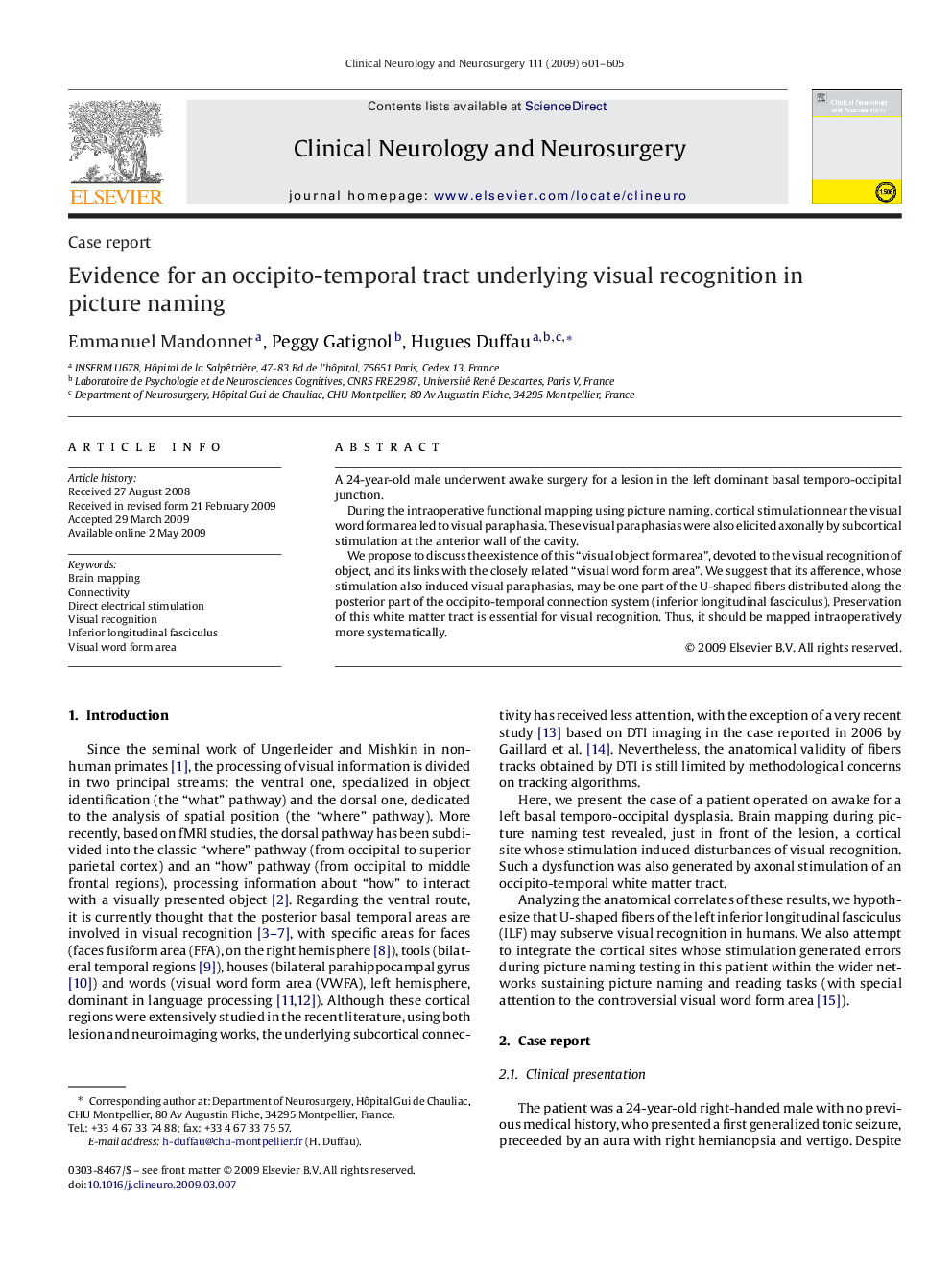| Article ID | Journal | Published Year | Pages | File Type |
|---|---|---|---|---|
| 3041912 | Clinical Neurology and Neurosurgery | 2009 | 5 Pages |
A 24-year-old male underwent awake surgery for a lesion in the left dominant basal temporo-occipital junction.During the intraoperative functional mapping using picture naming, cortical stimulation near the visual word form area led to visual paraphasia. These visual paraphasias were also elicited axonally by subcortical stimulation at the anterior wall of the cavity.We propose to discuss the existence of this “visual object form area”, devoted to the visual recognition of object, and its links with the closely related “visual word form area”. We suggest that its afference, whose stimulation also induced visual paraphasias, may be one part of the U-shaped fibers distributed along the posterior part of the occipito-temporal connection system (inferior longitudinal fasciculus). Preservation of this white matter tract is essential for visual recognition. Thus, it should be mapped intraoperatively more systematically.
